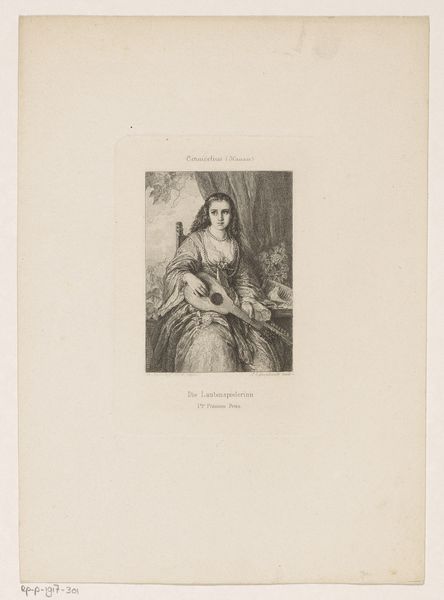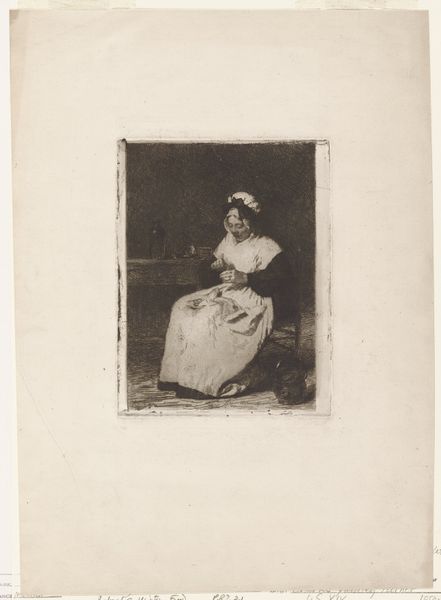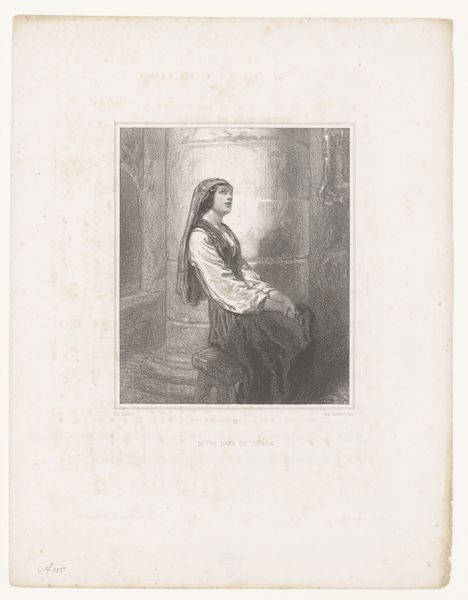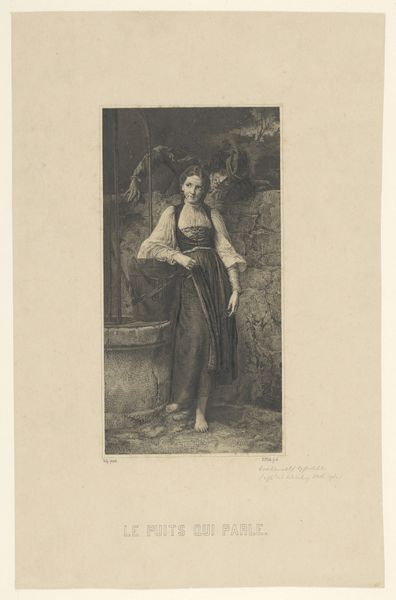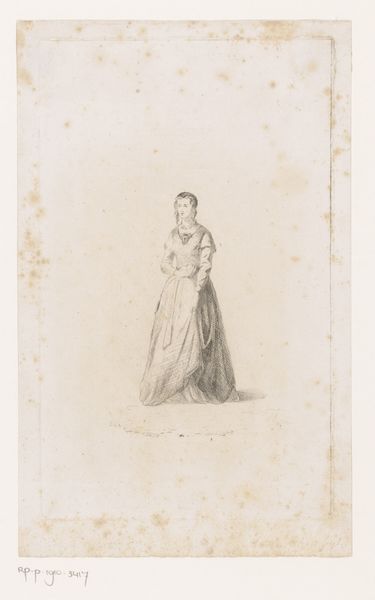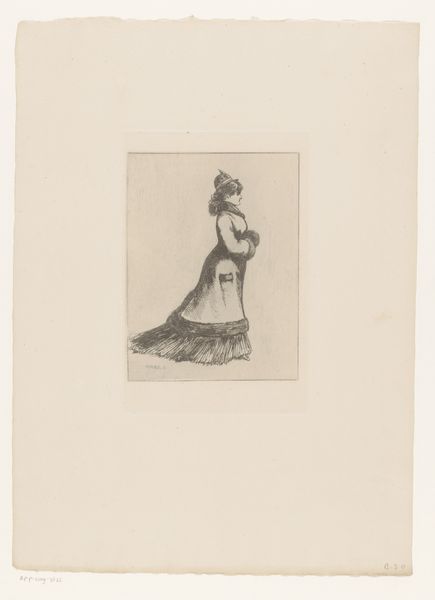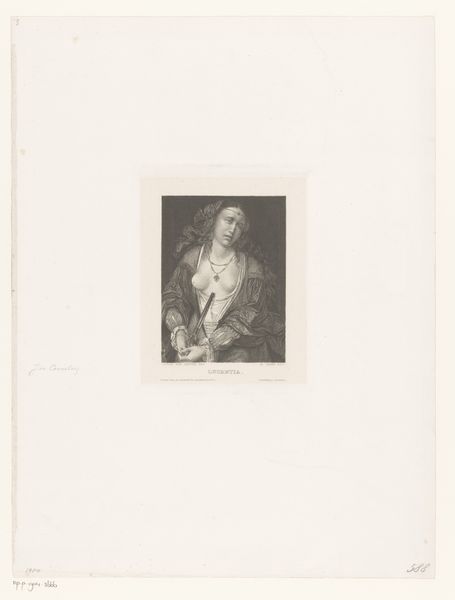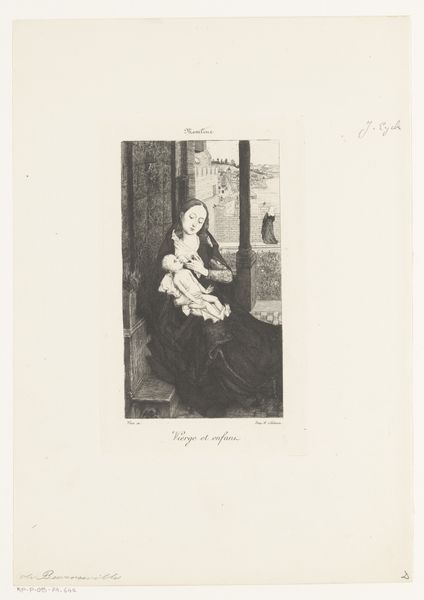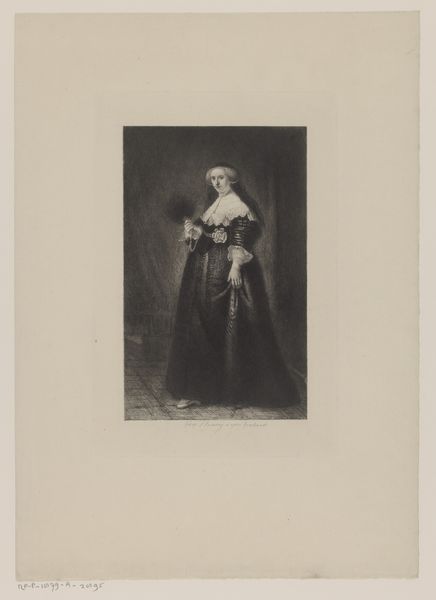
print, etching
#
portrait
# print
#
etching
#
figuration
#
realism
Dimensions: height 236 mm, width 147 mm
Copyright: Rijks Museum: Open Domain
Editor: So, here we have Léopold Flameng's "Portret van Alix Marie Adélaïde Pasca," an etching from between 1841 and 1910. I’m immediately struck by how proper and serious she looks, very befitting of the period, but I find the dress quite stunning, all swirling and detailed. How would you interpret this portrait, beyond just a record of someone's likeness? Curator: Ah, portraits are never *just* likenesses, are they? They're like little time capsules filled with social cues and personal narratives. Here, Flameng captures more than just Alix's physical form; he's presenting her as a woman of standing, enmeshed in a particular social milieu. The detailed rendering of the fabric – that swoosh! – it screams wealth, power. And the etching itself, such an intricate printmaking method, becomes almost like a love letter to the artistry itself. Almost makes you wonder, what was *she* thinking when she posed? Do you get any of that feeling? Editor: Absolutely, the gown, and even her somewhat restrained pose, they communicate status, it's interesting you call it a love letter, because the detail almost looks photographic but with, of course, that very unique aesthetic we only get with the etching process. But what of *her*? Is she just an ornament here? Curator: A very good question, which always nags when looking at portraiture, I feel. Perhaps. Or, and I *prefer* to believe this: perhaps she collaborated in crafting this image, using the accepted visual vocabulary of the era. These controlled circumstances served *her* wishes to be depicted this specific way. Consider that look she gives; its serene knowing seems to have *intent* to me. Perhaps the real puzzle is deciphering her choices. Does that alter your interpretation? Editor: It does! Seeing it as a conscious choice by her to project an image gives it much more agency, than just her being passively memorialized by the artist. Thank you, I feel I am getting to see this etching through completely new eyes now! Curator: Absolutely! The joy of it is always to question the narratives we automatically take from them!
Comments
No comments
Be the first to comment and join the conversation on the ultimate creative platform.
